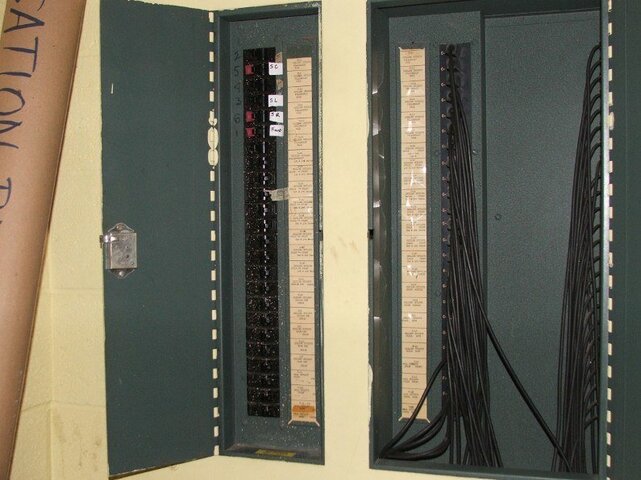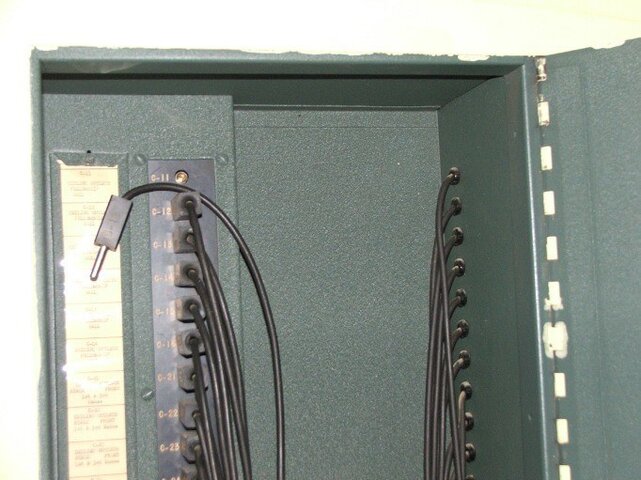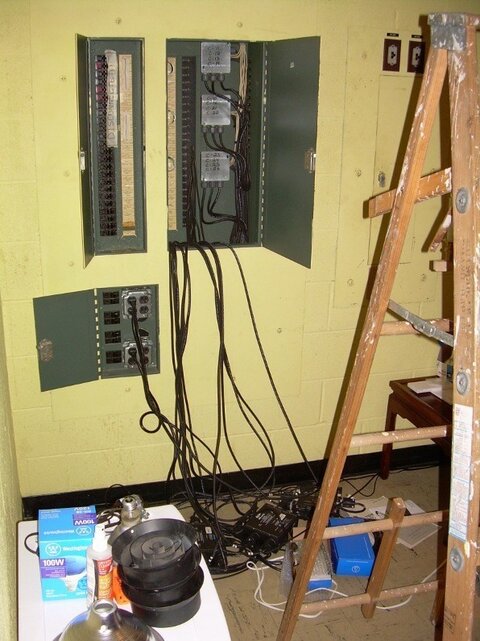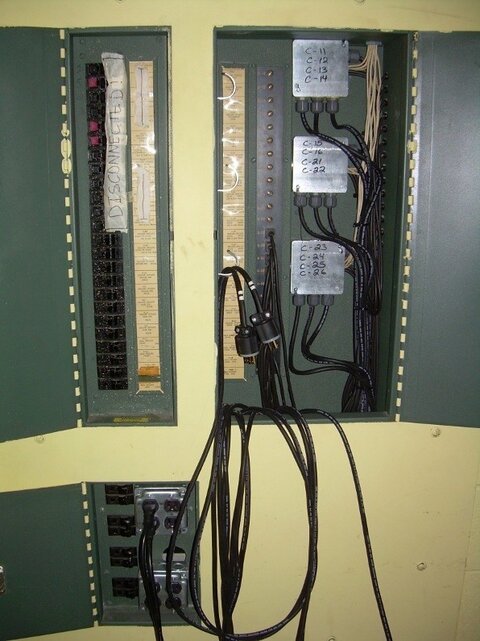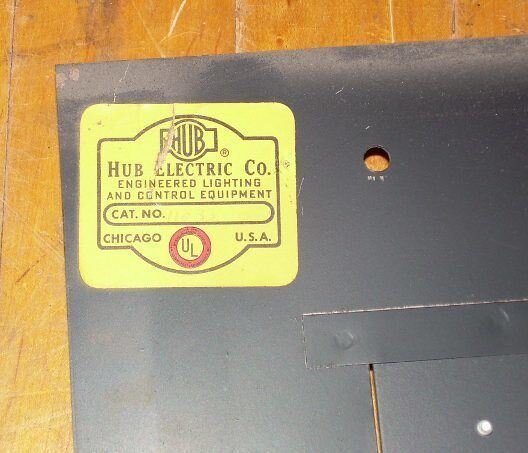I might be able to dig up an old yearbook picture of me at the board. Basically, our
Hub Board consisted of 18 2500
watt heavy
manual dimmers handles (1A, 1B, 1C through 6A, 6B and 6C) that each could be controlled independently or could act as slaves if electrically tied to the larger "Master"
dimmer handles, labeled M1
thru M6 located in the center of the board..
For example, if 1A was set to direct, it acted independently as its own master, but if 1A, 1B and 1C were set in "proportional", the M1 handle became their master (hence M) for those 1A, 1B abd 1C handles and would control their
intensity as long as 1A, 1B or 1C were at a non-zero
intensity level. Naturally, M2 controlled 2A, 2B and 2C, and so on.
Each M1
thru M6 Master handle could be "clicked-in" so that they all could be moved as a
unit for dimming the
stage lights in
unison.
In addition, each Master handle could be patched to any
receptacle in the theater and could act independently if hard-patched via the telephone-type patch panel. Each M handle was capable of 10000 watts of output.
So if I remember correctly, we had M1 through M4 controlling 1A through 4C, M5 and M6 acted independently (M1 through M6 controlled our FOH lekos, fresnels and white cycs and lit the general stage.) 5A, 5B and 5C were Altman follow spots and a stationary spot DSC, and 6A, 6B and 6C were RGB colored cycs that illuminated the stage behind the proscenium arch.
I worked with that board from 1975 through 1978 and last saw it in 1989 when former tech-crew chiefs were asked to return as a guest lighting technician to celebrate the school's 25th year anniversary. It has since been replaced with modern technology, but the fond memories remain.
Chris ) stage pin connectors around and in front of the stage. I later had half of them converted to Edison plugs, so I could control them via a bunch of shoebox dimmers (yay dimming!)
) stage pin connectors around and in front of the stage. I later had half of them converted to Edison plugs, so I could control them via a bunch of shoebox dimmers (yay dimming!)


